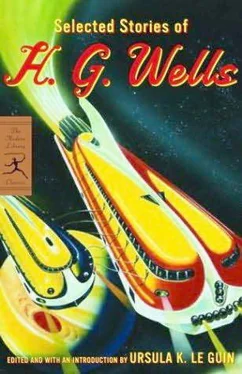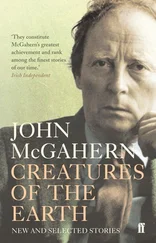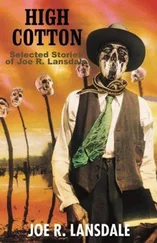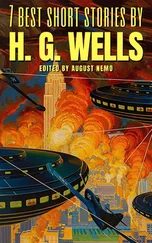Wells’s later fiction became increasingly autobiographical. The New Machiavelli (1911) and the best-selling Mr. Bristling Sees It Through (1916) were the most notable. Others, such as Marriage (1912), prompted a young journalist named Rebecca West to dismiss him as the “old maid among novelists.” Yet the two conducted a ten-year love affair and had a son, Anthony West. Wells continued to produce compelling prognostications. Despite having dubbed World War I “the war that will end war,” he wrote The World Set Free (1914), a speculative history of the future that predicted the coming age of nuclear warfare.
In 1920 The Outline of History, an encyclopedic work written to further the cause of world peace, brought Wells to the height of his fame. An international best-seller, the book included this memorable saying: “Human history becomes more and more a race between education and catastrophe.” The same year he traveled to Russia to meet Lenin and reported on the new Communist regime in Russia in the Shadows (1920).
In 1923 Wells ended his relationship with Rebecca West and later moved to the south of France with his new mistress, political exile Odette Keun. There he wrote The World of William Clissold (1926), his most ambitious novel of the period. Upon returning to London in 1930 Wells brought out The Science of Life (1930) and The Work, Wealth and Happiness of Mankind (1932), two companion volumes to The Outline of History.
With the rise of fascism Wells became less optimistic about the future, and in The Shape of Things to Come (1933) he accurately predicted a second world war that would begin in 1939. However, he journeyed to the United States and Russia in 1934, attempting to promote global peace. Back in England he published his memoirs, the masterful two-volume Experiment in Autobiography (1934), and worked with Alexander Korda on a film version of The Shape of Things to Come. Though happily involved with Moura Budberg, the Russian spy who was his last companion, Wells remained fatalistic about mankind. The advent of World War II only heightened the author’s despondency as he lived to see many of his dire predictions come true. “Reality has taken a leaf from my book and set itself to supersede me,” he bitterly observed. A final work, Mind at the End of Its Tether (1945), bleakly foretold the destruction of civilization.
H. G. Wells died suddenly and peacefully on August 13, 1946, just a few weeks before turning eighty, at his home in Hanover Terrace, London. Three days later his body was cremated and the ashes scattered over the English Channel near the Isle of Wight. A third volume of autobiography, H. G. Wells in Love, appeared posthumously in 1984.
Throughout his more than fifty-year career, H. G. Wells wrote over eighty short stories. Some stories were first published in periodicals, others in five short-story collections. Many of these stories appeared numerous times in Wells’s collections, sometimes slightly revised, other times reworded or with new endings, as was the case with “The Country of the Blind.” Numerous bibliographies detailing the publication history of Wells’s fiction and nonfiction can be found online or in reference libraries.
The following list details where the stories included in this edition were first published and their subsequent republications in short-story collections.
“A Slip Under the Microscope”: Yellow Book, January 1896; later in The Plattner Story and Others (1897) and The Country of the Blind and Other Stories (1913).
“The Remarkable Case of Davidson’s Eyes”: Pall Mall Budget, March 28, 1895; later in The Stolen Bacillus and Other Incidents (1895) and The Country of the Blind and Other Stories (1913).
“The Plattner Story”: New Review, April 1896; later in The Plattner Story and Others (1897) and The Country of the Blind and Other Stories (1913).
“Under the Knife”: New Review, January 1896; later in The Plattner Story and Others (1897) and The Country of the Blind and Other Stories (1913).
“The Crystal Egg”: New Review, May 1897; later in Tales of Space and Time (1899) and The Country of the Blind and Other Stories (1913).
“The New Accelerator”: Strand Magazine, December 1901; later in Twelve Stories and a Dream (1903) and The Country of the Blind and Other Stories (1913).
“The Stolen Body”: Strand Magazine, November 1898; later in Twelve Stories and a Dream (1903).
“The Argonauts of the Air”: Phil May’s Annual, December 1895; later in The Plattner Story and Others (1897) and Thirty Strange Stories (1897).
“In the Abyss”: Pearson’s Magazine, August 1, 1896; later in The Plattner Story and Others (1897).
“The Star”: Graphic, December 1897; later in Tales of Space and Time (1899) and The Country of the Blind and Other Stories (1913).
“The Land Ironclads”: Strand Magazine, December 1903.
“A Dream of Armageddon”: Black and White Budget, May–June 1901; later in Twelve Stories and a Dream (1903) and The Country of the Blind and Other Stories (1913).
“The Lord of the Dynamos”: Pall Mall Budget, September 6, 1894; later in The Stolen Bacillus, and Other Incidents (1895), Thirty Strange Stories (1897), and The Country of the Blind and Other Stories (1913).
“The Valley of Spiders”: Strand Magazine, March 1903; later in Twelve Stories and a Dream (1903) and The Country of the Blind and Other Stories (1913).
“The Story of the Late Mr. Elvesham”: Idler, May 1896; later in The Plattner Story and Others (1897), Thirty Strange Stories (1897) , and The Country of the Blind and Other Stories (1913).
“The Man Who Could Work Miracles”: Illustrated London News, July 1898; later in The Country of the Blind and Other Stories (1913).
“The Magic Shop”: Strange Magazine, June 1903; later in Twelve Stories and a Dream (1903) and The Country of the Blind and Other Stories (1913).
“Mr. Skelmersdale in Fairyland”: London Magazine, July 1898; later in Twelve Stories and a Dream (1903).
“The Door in the Wall”: Daily Chronicle, July 14, 1906; later in The Country of the Blind and Other Stories (1913).
“The Presence by the Fire”: Penny Illustrated Paper, August 14, 1897.
“A Vision of Judgment”: Butterfly, September 1899; later in The Country of the Blind and Other Stories (1913).
“The Story of the Last Trump”: first published as chapter 10 of Boon, the Mind of the Race, the Wild Asses of the Devil, and the Last Trump, Being a First Selection from the Literary Remains of George Boon, Appropriate to the Times (1915).
“The Wild Asses of the Devil”: first published as chapter 8 of Boon.
“Answer to Prayer”: New Statesman, April 10, 1937.
“The Queer Story of Brownlow’s Newspaper”: Strand Magazine, February 1932.
“The Country of the Blind”: the first version of this story appeared in Strand Magazine, April 1904, and later in The Country of the Blind and Other Stories (1913). The revised, expanded version appeared in The Country of the Blind (1939).
Читать дальше












